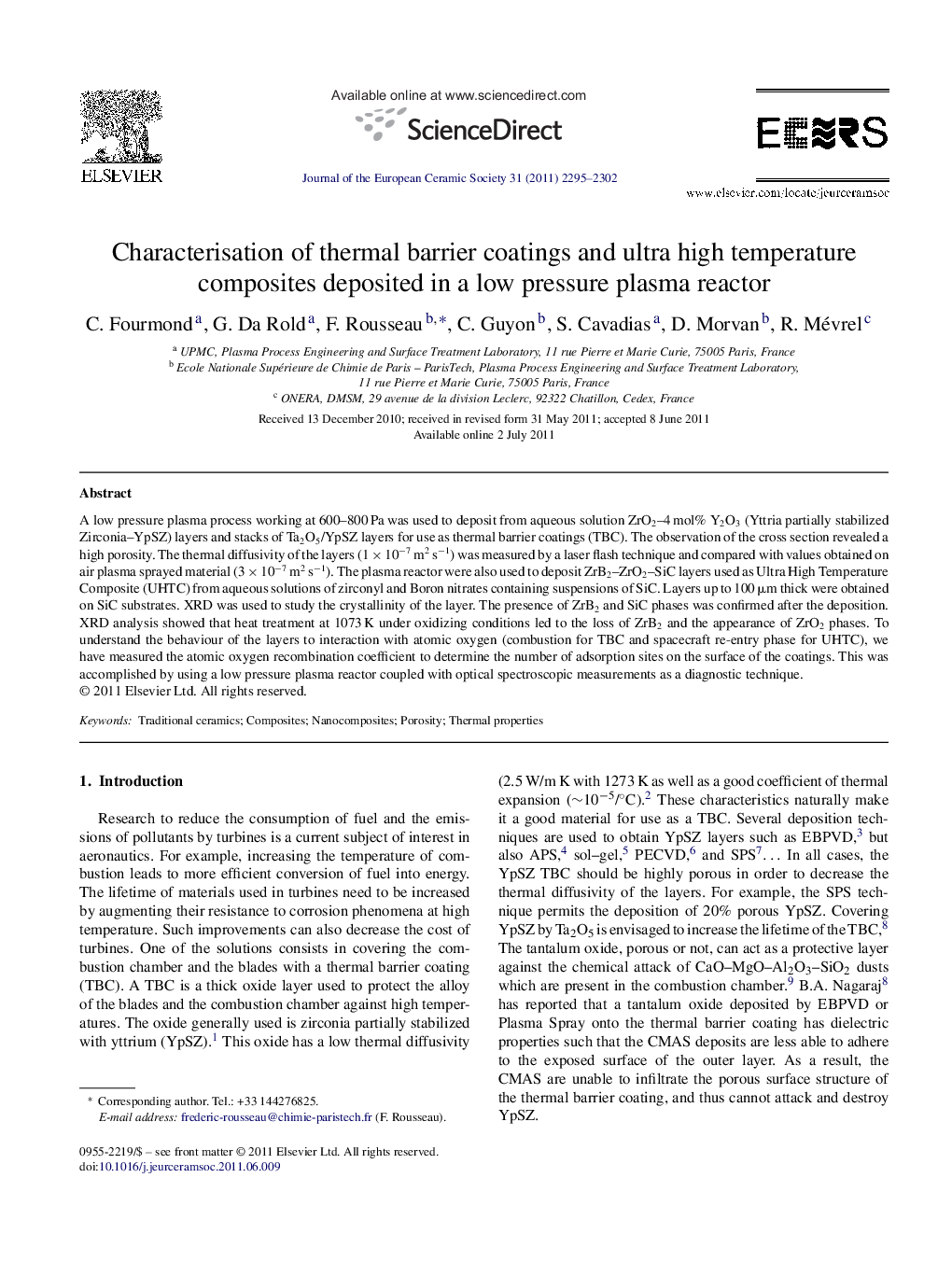| Article ID | Journal | Published Year | Pages | File Type |
|---|---|---|---|---|
| 1475803 | Journal of the European Ceramic Society | 2011 | 8 Pages |
A low pressure plasma process working at 600–800 Pa was used to deposit from aqueous solution ZrO2–4 mol% Y2O3 (Yttria partially stabilized Zirconia–YpSZ) layers and stacks of Ta2O5/YpSZ layers for use as thermal barrier coatings (TBC). The observation of the cross section revealed a high porosity. The thermal diffusivity of the layers (1 × 10−7 m2 s−1) was measured by a laser flash technique and compared with values obtained on air plasma sprayed material (3 × 10−7 m2 s−1). The plasma reactor were also used to deposit ZrB2–ZrO2–SiC layers used as Ultra High Temperature Composite (UHTC) from aqueous solutions of zirconyl and Boron nitrates containing suspensions of SiC. Layers up to 100 μm thick were obtained on SiC substrates. XRD was used to study the crystallinity of the layer. The presence of ZrB2 and SiC phases was confirmed after the deposition. XRD analysis showed that heat treatment at 1073 K under oxidizing conditions led to the loss of ZrB2 and the appearance of ZrO2 phases. To understand the behaviour of the layers to interaction with atomic oxygen (combustion for TBC and spacecraft re-entry phase for UHTC), we have measured the atomic oxygen recombination coefficient to determine the number of adsorption sites on the surface of the coatings. This was accomplished by using a low pressure plasma reactor coupled with optical spectroscopic measurements as a diagnostic technique.
► A plasma process was used to deposit ZrO2-Y2O3,Ta2O5 and ZrB2- ZrO2-SiC layers ► The coatings were deposited by using aqueous solutions and suspension ► The layers exhibit a very interesting morphology ► The atomic oxygen recombination coefficient was measured at the surface of the layers
